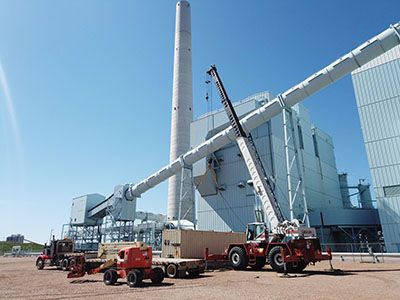A University of California, Los Angeles research team has received $2 million from the U.S. Department of Energy (DOE) to extend work for two years toward commercial scale deployment of a process where carbon dioxide, captured from cement or power plant flue gas emissions, is recycled and mineralized within concrete mixes.

|
| The DOE infusion jumpstarts the Carbon Upcycling team’s carbon dioxide mineralization demonstration at Dry Fork Station, a coal-fueled power plant outside of Gillette, Wyo. CO2Concrete curing chamber installation is shown here earlier this summer following a four-month, pandemic-rooted delay. PHOTO: Gabriel Falzone, UCLA |
Along with $905,000 in new commitments from university discretionary funds and industry partners, the DOE grant will support work under UCLA Institute for Carbon Management Director and Civil and Environmental Engineering Professor Gaurav Sant. A Santa Fe, N.M. entity he founded, CO2 Concrete, will license the flue gas capture, recycling and mineralization technology to cement and other industrial businesses seeking to streamline their net carbon dioxide emissions.
The UCLA initiative is one of 11 projects in four areas chosen to share a total of approximately $17 million through the Carbon Utilization Program, which is administered by the DOE Office of Fossil Energy. The UCLA team, Carbon Upcycling, received the only award in the area of “Production of inorganic materials: Maximizing uptake in concrete and cement.” The team also is one of five finalists competing for a $7.5 million prize in the coal track of the NRG COSIA Carbon XPRIZE, which is seeking the most viable technology for turning carbon dioxide emissions into valuable products.
Leading into the Energy grant announcement, Carbon Upcycling was preparing an industrial scale process demonstration at Dry Fork Station, a coal-fired power plant near Gillette, Wyo. During a 90-day trial, team members aim to produce more than 150 tons of concrete products for use on the UCLA campus and construction sites elsewhere.


